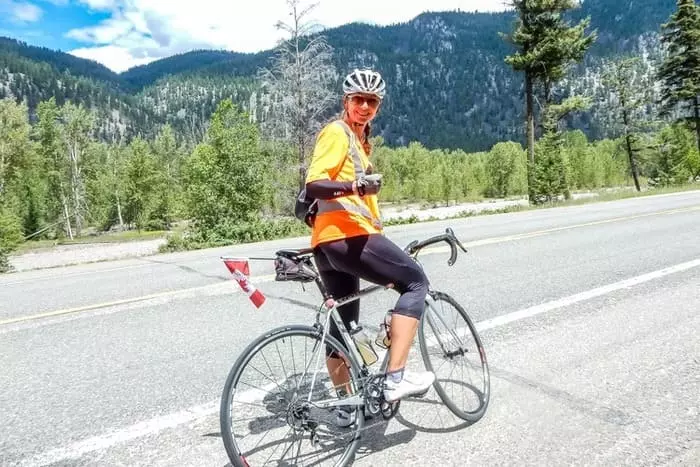WHAT TO PACK?
Are you thinking of going on a bike adventure? I'm sure you thought about the basics but there are couple of things that will definitely come in very handy. Consider packing these items that I found essential during my journey. Make sure you have:

- Bright clothing - I highly recommend wearing fluorescent orange or green shirts and sweaters. You can also get reflective stripes and attach them to your clothes. Many highways, especially in British Columbia and Ontario have very narrow shoulders and you will be riding next to fast moving cars and tracks. They don't always notice cyclists till last minute and may not be able to pass you properly. Wearing bright colours will help with being noticed.
- Flag - This simple addition will strike a conversation or curiosity and many people may invite you to spend a night in their guest room. It is always nice to sleep in bed and hot shower feels amazing. People often provide some food and even donations. Don't pass this opportunity.
- Whistle - Should be attached close to your head so you can easily use it. This may help you to scare some wild animals that you may encounter on your journey. Wild animals get scared with loud and high pitch noises. Whistle may also help when you get pushed off the road and end up in a deep ditch, you can make noise to bring attention and let people know you are injured.
- Well-equipped first aid kit - If you are on a solo trip you really have to be prepared for anything and must count on yourself. You just never know when help may arrive. I cover what I brought with me in another section, so please take a look.
- Scarf or light fabric - You may need it for first aid (stopping bleeding or supporting broken bone). You may use the fabric to block the sun when riding through prairies and creating your own shade. Depending on the season you are riding, there might areas full of black flies which will get under your helmet and chew your skin. I used scarf to wrap my head which totally prevented the bugs from biting me. Light scarf will come in handy even for carrying things or using it as a rope.
- Duct tape - You never know what can break during your trip and duct tape may just hold things together till you get to a city or a place where you can have it fixed. Good strong tape is a must.
- Bungee cords - These stretchy ropes always come in handy even if you just pack one or two. There might be something you need to tie into your bike, you never know.